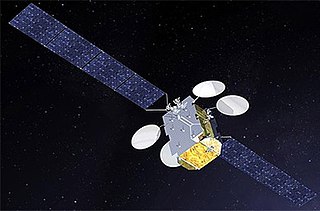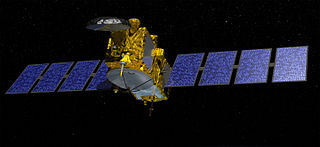 W
WAstérix or A-1 is the first French satellite. It was launched on 26 November 1965 by a Diamant A rocket from the CIEES launch site at Hammaguir, Algeria. With Astérix, France became the sixth country to have an artificial satellite and the third country to launch a satellite on its own rocket. Its main purpose was to test the Diamant launcher, though it was also designed to study the ionosphere. Astérix orbits Earth as of December 2020 and is expected to do so for centuries.
 W
WCALIPSO is a joint NASA (USA) and CNES (France) environmental satellite, built in the Cannes Mandelieu Space Center, which was launched atop a Delta II rocket on April 28, 2006. Its name stands for Cloud-Aerosol Lidar and Infrared Pathfinder Satellite Observations.
 W
WCerise was a French military reconnaissance satellite. Its main purpose was to intercept HF radio signals for French intelligence services. With a mass of 50 kg, it was launched by an Ariane rocket from Kourou in French Guiana at 17:23 UT, 7 July 1995. Cerise's initial orbital parameters were period 98.1 min, apogee 675 km, perigee 666 km, and inclination 98.0 deg.
 W
WCoRoT was a space telescope mission which operated from 2006 to 2013. The mission's two objectives were to search for extrasolar planets with short orbital periods, particularly those of large terrestrial size, and to perform asteroseismology by measuring solar-like oscillations in stars. The mission was led by the French Space Agency (CNES) in conjunction with the European Space Agency (ESA) and other international partners.
 W
WEUTELSAT KONNECT is a geostationary communications satellite operated by Eutelsat. The satellite was designed and manufactured by Thales Alenia Space on the Spacebus NEO 100 platform, and was launched on 16 January 2020 on an Ariane 5 ECA. The satellite provides broadband internet and communications coverage to Europe and Sub-Saharan Africa.
 W
WFR-1 was the second French satellite. Planned as the first French satellite, it was launched on 6 December 1965—ten days after the actual first French satellite, Astérix—by an American Scout X-4 rocket from the Western Range at Vandenberg Air Force Base. The scientific satellite studied the composition and structure of the ionosphere, plasmasphere, and magnetosphere by measuring the propagation of very low frequency (VLF) waves and the electron density of plasma in those portions of the Earth's atmosphere. FR-1's VLF receiver operated until 26 August 1968. FR-1 remains in orbit as of November 2020.
 W
WJason-3 is a satellite altimeter created by a partnership of the European Organisation for the Exploitation of Meteorological Satellites (EUMETSAT) and National Aeronautic and Space Administration (NASA), and is an international cooperative mission in which National Oceanic and Atmospheric Administration (NOAA) is partnering with the Centre National d'Études Spatiales. The satellites' mission is to supply data for scientific, commercial, and practical applications to sea level rise, sea surface temperature, ocean temperature circulation, and climate change.
 W
WPicSat is a French observatory nanosatellite, designed to measure the transit of Beta Pictoris b, an exoplanet which orbits the star Beta Pictoris.
 W
WROBUSTA is a nano-satellite scientific experiment developed by the University of Montpellier students as part of a Centre National d'Études Spatiales (CNES) call for student projects in the field of orbital systems.
 W
WTDF 1 or TDF-1 was a French communications satellite which was to have been operated by Télévision de France. It was intended to be used to provide television broadcast services to Europe, however it failed before entering service. It was constructed by Aérospatiale, based on the Spacebus 300 satellite bus, and carried five Ku-band transponders. At launch it had a mass of 2,144 kg (4,727 lb), and an expected operational lifespan of eight years.
 W
WVegetation and Environment monitoring on a New Micro-Satellite (VENµS) is a near polar sun-synchronous orbit microsatellite. It is a joint project of the Israeli Space Agency and CNES. The project was signed upon in April 2005 and was launched on the 2nd of August 2017. The microsatellite, which was set to cost the ISA US$20 million and CNES €10 million, was designed and built by IAI and Rafael under ISA's supervision.